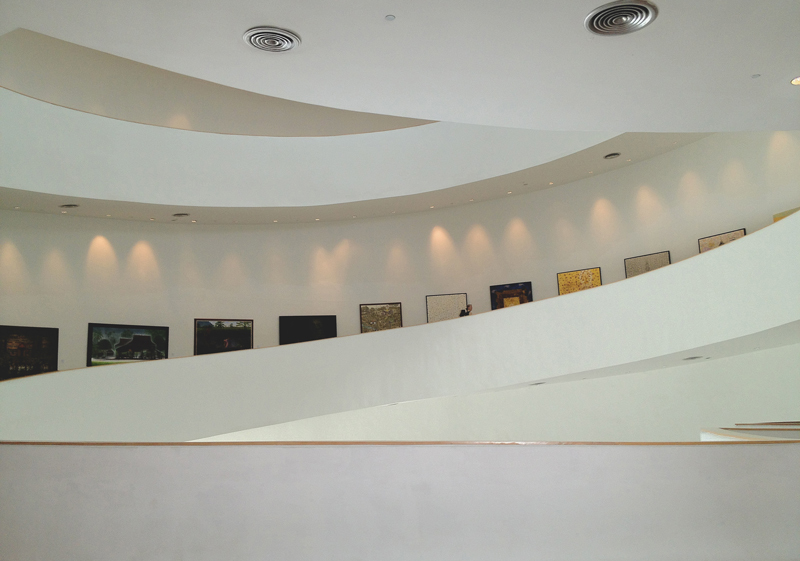Månadens Post
Design Down Under
Publicerat 2007.06.18
by Anders Warell, Wellington, New Zealand
What have you heard about design from New Zealand? Or about New Zealand at all? Probably not very much. If you’ve heard anything at all, it’s probably been about the stunning beauty of the landscape, the friendliness of the people, or the vast numbers of sheep and cows.
Not surprisingly, there’s a lot on offer apart from this. Out there in the world, New Zealand makes a lot of fuzz about itself as the “clean, green NZ”, preferably branded as “100% Pure”. They take a lot of pride in being what they are, and they do a good job at catering for all who do come the long way to stay for shorter or for longer; as of yet, I’ve never heard of anyone who’s not been satisfied, pleased or even blown away by a visit to this remote group of south pacific islands. With respect to experience design, New Zealand probably rates among the most sophisticated in the ease and pleasure with which they cater for their visitors.
Talking the “creative industries” as it is often called here, one cannot help to notice some significant characteristics of the New Zealand design landscape. Most likely, few of you have missed the success of one of the most prominent NZ export products recently; the movie industry. Although film making has created waves for quite a while through internationally recognised movies such as “Once a warrior” in the mid-nineties, the more recent and quite mind-blowing success of the Lord of the Rings trilogy has created a tremendous interest in the capability of NZ directors, movie makers and special effects people. Having started in a corrugated steel shack in a Wellington industrial area, the local film industry is now attracting big international attention – and money. Major block busters such as King Kong, Narnia, and The World’s fastest Indian have been followed by the likes of Charlie and the Chocolate Factory and Bridge to Trebithia, featuring kiwi movie making skills and special effects wonderwork. Spreading across undulating green hillsides of the North Island to other major centres such as Auckland, the natural wonder of the locally available movie sets now include major developments in remote corners of the Southern Alps.
In a small country like this, successes such as these create a tremendous impact in all sorts of fields. Working in industrial design education it is fascinating to see how the term “industrial design” as a result encompasses so much more than we may associate with it in Sweden. Here, the impact of the moving image scene has created a tremendous demand for competency, resulting in industrial design students venturing into fields such as movie production design involving both model making a la Weta Workshops and animation design a la Weta Digital. Creative entertainment design has come to stay; now it’s time for other fields of design to follow.
Arriving to the capital Wellington to work in design education and research two years ago, I was surprised to realize how many similarities there are between New Zealand and Sweden in terms of the general design discussion. The discussion in society and news media emphasize the significance for national welfare and international competitiveness. The NZ Government has launched a significant programme featuring design as one of three focus areas for investment in innovation and knowledge; the other two being information technology and bio technology. Does it sound familiar? It certainly does. At the top of the agenda, policy makers are realising that without good design, companies will fall short in the international marketplace.
Although there are a number of internationally significant and innovative design led businesses such as Fisher & Paykel Appliances, Formway Furniture, Tait Electronics and Macpac Outdoor, the majority of companies are small and medium sized companies, here defined as having less than one hundred employees. Despite the fact that most companies, as New Zealanders in general, see themselves as highly innovative with an unmatched “can-do” attitude, most industrial production is characterised by a quite low level of value added content. The strategy for success is to propel the international competitiveness of companies through the adoption of design led thinking and new product development initiatives. A variety of funding schemes is available for companies to team up with tertiary education research and other innovation providers to enable them to reach levels of design capability on par with, or most preferably exceeding, global competition.
Despite good intentions, the step towards design led success represents a significant challenge for the national psyche. Proud of their “kiwi ingenuity”, kiwis have since settlement developed a deeply rooted “number eight wire” mentality – referring to a size gauge of metal thread, always at hand with farmers and anyone needing to fix things on the spot. This mindset is as much a curse as an asset – the delight with which things are fixed with minimal effort and the scarcest of resources is fascinating and sometimes nothing short of mind-boggling. For a long time this has served them well, as it certainly does boost innovation. Inventions such as the eftpos system by which cash money is virtually eliminated and the “dish-drawer” dishwasher by Fisher& Paykel have certainly proven kiwi ingenuity on an international scale. Most oftenly, however, it does not necessarily recognise the need for high end design sophistication – a major factor for success in today’s saturated market segments. Coupled with what is sometimes described as a fear of making money, this has left many companies producing standard goods products or raw materials such as wood or wool. Recently, New Zealand has seen a number of examples of successful local industries finding an unfortunate fate, such as being sold to overseas corporations or seeing large scale industrial production moving to Asia.
Challenges such as these are definitely not unique to New Zealand, and they may even be more adept at solving these problems than many others in the same situation –finding their own way of dealing with things have always been a national trait. Despite a sometimes low self esteem stemming from being geographically displaced (which, according to some studies, really doesn’t seem to have anything to do with it at all), their pride of being New Zealanders is profound often fiercely celebrated – at home and even more so abroad. Take the recent success in the Americas Cup as a splendid example of that.
So, what about the sheep and dairy industry? Well, with 45 million sheep and a dairy production eight times bigger than that of Sweden, the agricultural sector is still the main driver of the economy. Ninety five percent of dairy production is exported, which makes the industry heavily dependent on international demand. Recent events such as the draught in Australia, the shift towards corn based ethanol production in the US and the shortage of production area within the EU has propelled prices and demand of NZ products to new heights, boosting the already world leading efficiency and quality of locally made dairy products. The wool industry is at the moment a driver for design led innovation and success – the world’s finest quality wool from high country Merino stations in the Southern Alps is turned into designer garments and brands for serious outdoor pursuits as well as the casual wearer, representing a globally successful business bearing all the characteristics of true kiwi ingenuity and entrepreneurship.
Anders Warell is Associate Professor and Head of Industrial Design at Massey University School of Design in Wellington, New Zealand. He leads the industrial design programme and is the inaugural Director of Affect – the Centre for Affective Design Research, a research centre that connects research and education with design innovation processes in New Zealand companies.


